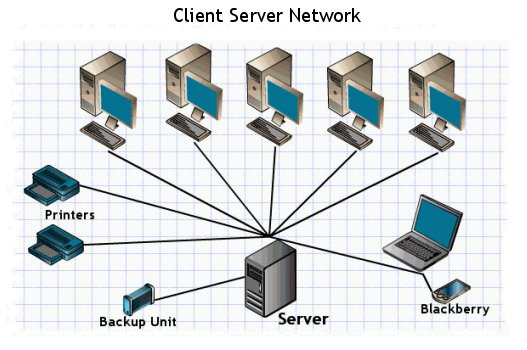Client-Server Network

A client-server network is a computing architecture that divides tasks or processes between clients and servers. In this architecture, clients are devices or applications that request services or resources from servers, which are specialized computers or software applications that provide those services or resources. The client-server model is commonly used in networked systems, including the internet, corporate networks, and cloud computing environments.
Key features of a client-server network include:
Client: A client is a device or software application that initiates requests for services or resources from servers. Clients can range from desktop computers, laptops, and smartphones to specialized software programs used for specific tasks.
Server: A server is a specialized computer or software application that responds to client requests by providing services or resources. Servers are typically more powerful and have greater processing and storage capabilities than clients. They may be dedicated to specific tasks, such as web hosting, file storage, database management, or application hosting.
Communication Protocol: Client-server communication is facilitated through a communication protocol, which defines the rules and formats for exchanging data between clients and servers. Common communication protocols used in client-server networks include HTTP (Hypertext Transfer Protocol) for web communication, FTP (File Transfer Protocol) for file transfer, and SMTP (Simple Mail Transfer Protocol) for email communication.
Client-Server Interaction: Clients initiate communication with servers by sending requests for services or resources. Servers process these requests, perform the necessary tasks, and send back responses to the clients. This interaction follows a request-response pattern, where clients send requests and servers send back responses.
Centralized Management: In a client-server network, servers play a central role in managing resources, data, and services. They often have centralized control over access, security, and administration, which allows for easier management and maintenance of networked systems.
Scalability and Flexibility: Client-server architecture is scalable and flexible, allowing for the addition of new clients and servers as needed. Servers can be added or upgraded to handle increased demand, while clients can access services from anywhere with network connectivity.
Examples of client-server networks include:
Overall, the client-server network architecture provides a scalable, efficient, and centralized approach to delivering services and resources to users in networked environments.
Thank you,